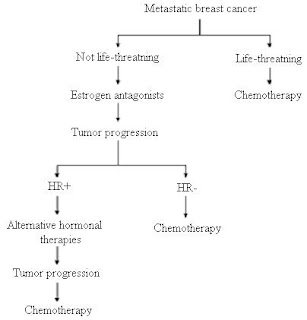Below is an image of detecting chromosome translocations in sections of breast.
In breast cancer, we have shown that the NRG1/heregulin gene is translocated in 6% of primary cases and Soda and colleagues described fusions of ALK in 7% of lung cancers .
Article
Pathologists today know that there are certain gene mutations that are predictive of cancers; for example, women with the BRCA1 or BRCA2 mutation are at a greater risk of developing breast and/or ovarian cancer. What is less known is the availability of genetic HER-2/neu FISH testing, a sophisticated laboratory test able to better determine treatment options for an aggressive form of breast cancer. This information is important because it helps doctors to determine the best course of treatment for each patient.“HER-2/neu FISH testing is considered the gold standard because it has the advantage of looking at each tumor cell individually,” said Olga Falkowski, MD, a board-certified pathologist who serves as the Associate Medical Director and Director of Genetics at Acupath Laboratories, Inc., a national medical laboratory based in Plainview, NY. “Under U.S. Food & Drug Administration guidelines, all women with invasive breast cancer are eligible to undergo the test.”
In the body, the HER protein is a normally occurring substance that helps cells grow and stay strong. In about 20 percent of breast cancers, patients are HER-2 positive, meaning that cancer cells underwent genetic mutations responsible for production of excess protein called the HER-2/neu or human epidermal growth factor receptor 2. Patients with the genetic mutation HER-2 in breast cancer are eligible for a targeted therapy. Because of this, both the American Society for Clinical Oncology and National Comprehensive Cancer Network recommend HER-2/neu testing for all breast cancer tumors.
Women who undergo a biopsy for a suspicious lump and are diagnosed with cancer first receive immunohistochemistry or IHC of HER-2/neu testing as part of their initial laboratory workup. If the IHC testing is positive for Her-2/neu, then FISH is performed to confirm the genetic mutation.
What makes FISH or fluorescence in situ hybridization testing different and generally more effective, Dr. Falkowski said, is that it examines each individual cell of the tumor. “That’s a huge advantage,” she added. “The more a doctor knows about a tumor and its characteristics, the better that doctor can determine the most effective treatment options. The HER-2/neu FISH test tends to be more reliable.”
IHC testing quality can vary between laboratories based on the type of antibodies the lab uses, the way the lab prepares the tissue sample, and its criteria for determining the presence of HER-2, which is not the same everywhere. “Different labs have different reading systems,” Dr. Falkowski explained.
FISH testing is a more complex procedure, but is more specific and sensitive. It uses fluorescent probes to identify, tag and count the presence of genes that cause excessive production of the HER-2 protein in each individual cell. If more than two copies of the gene are found in each cell, the cancer is determined to be HER-2 positive and treated as such.
“It’s a more reproducible test, meaning the results from one lab to another should be the same,” Dr. Falkowski explained, adding that the HER-2 protein can also affect the aggressiveness and treatment of gastric and ovarian cancer. “Because it’s expensive technology, HER-2/neu FISH testing isn’t available everywhere, so doctors and their patients should know to ask for it,” adds Dr. Falkowski.
A concrete, reliable diagnosis of whether a woman with breast cancer is HER-2 positive will help lead to the best possible treatment starting immediately, improving survival and helping prevent recurrence. Standard chemotherapy drugs can be effective in treating Her-2/neu-positive patients, though more effective are two drugs that specifically target the Her-2/neu protein, trastuzumab (Herceptin) and lapatinib (Tykerb). Trastuzumab can be used alone or in conjunction with chemotherapy or hormone-blocking medications, though it comes with some potentially risky side effects, including congestive heart failure. Lapatinib is also generally used in combination with chemotherapy, most often in patients who have problems with trastuzumab. A promising new drug called trastuzumab emtansine or T-DM1 that combines several agents is also currently in clinical trials.
Dr. Falkowski continued, “As dramatic as this may sound, it’s true: For some women, HER-2/neu FISH testing could mean the difference between life and death.”
Olga Falkowski, M.D. is board-certified in anatomic and clinical pathology by the American Board of Pathology, and serves as the Associate Medical Director and Director of Genetics at Acupath Laboratories, Inc.
Acupath Laboratories, Inc. is a Plainview, New York, specialty medical lab engaged in cutting-edge diagnostics. http://www.acupath.com
http://www.prweb.com/releases/2012/5/prweb9457999.htm







